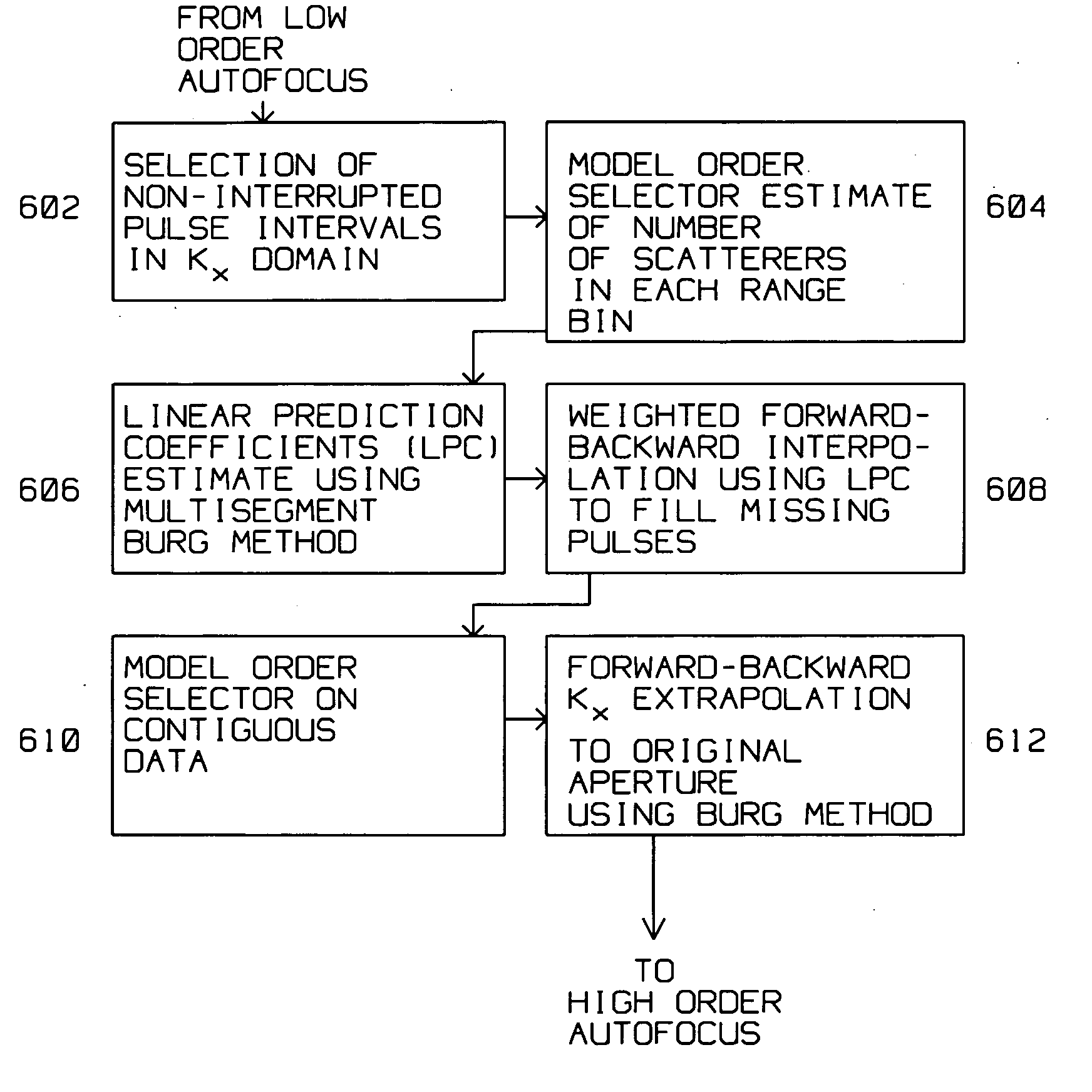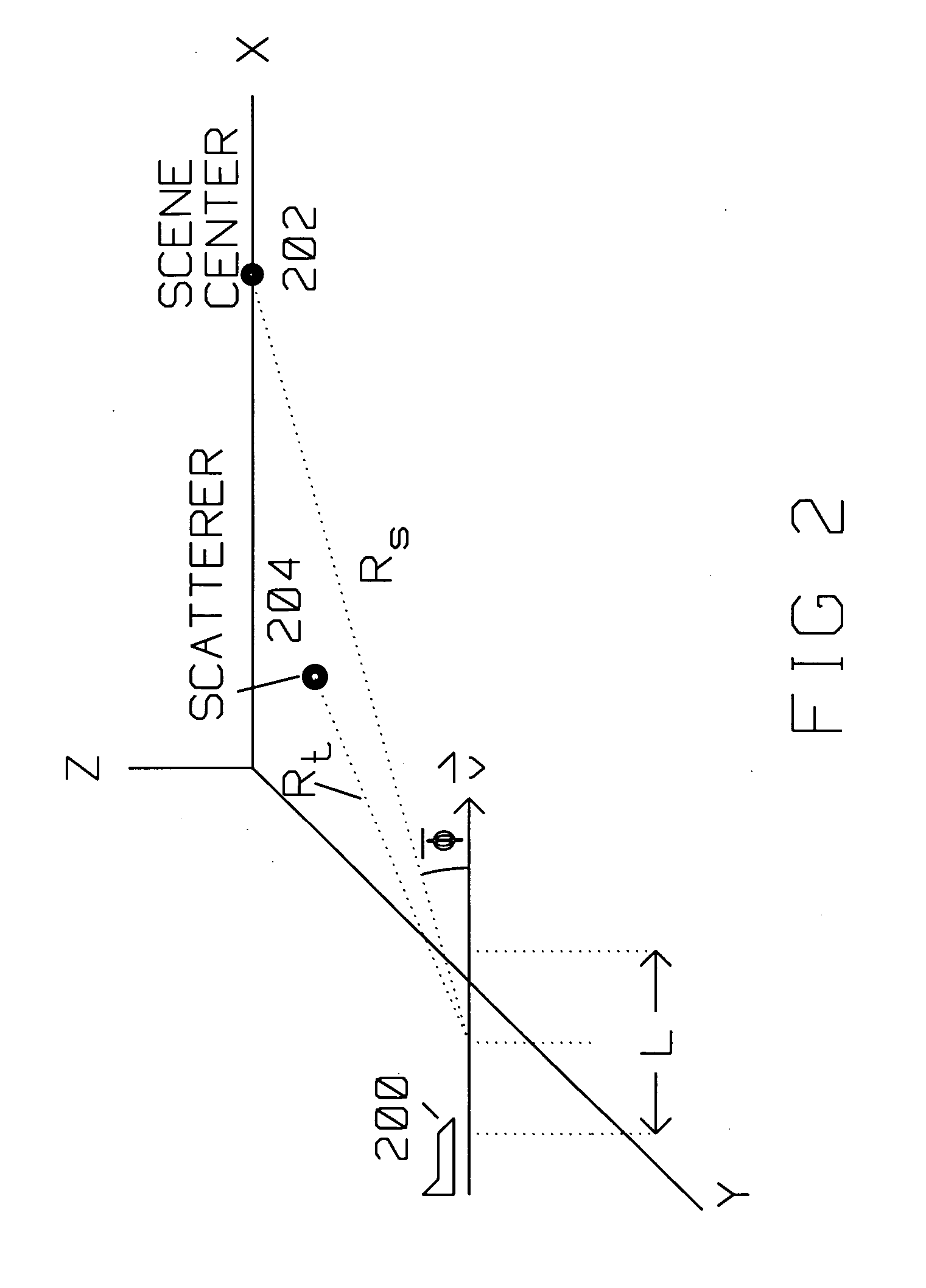Interrupt SAR implementation for range migration (RMA) processing
a range migration and processing technology, applied in the field of synthetic aperture radar (sar) imaging, can solve the problems of limited utility, image smearing in the azimuth direction, and sar mode coming from incomplete arrays
- Summary
- Abstract
- Description
- Claims
- Application Information
AI Technical Summary
Benefits of technology
Problems solved by technology
Method used
Image
Examples
Embodiment Construction
[0026] The present invention describes a method for improving search type SAR images of a patch where missing pulses within an incomplete array are restored using information contained in the incomplete array.
1) Introduction
[0027] SAR images require a complete (full) array of reflected pulse returns to generate the SAR image. Each of the returns from the reflected pulses are also accurately phase aligned, to achieve the in-phase combination of the information contained therein. SAR image degradation, typically due to phase errors arise from many sources. One source of such errors is navigation data inaccuracies from motion compensation, or from atmospheric effects on radar returns. Another is pulse interrupts (missing pulses) within an incomplete array.
[0028] Pulse interrupts in an incomplete SAR array raise the sidelobe level of a SAR image by as much as 20 dB, impacting the quality of the SAR image by a significant amount. One approach towards filling in the interrupts is desc...
PUM
 Login to View More
Login to View More Abstract
Description
Claims
Application Information
 Login to View More
Login to View More - R&D
- Intellectual Property
- Life Sciences
- Materials
- Tech Scout
- Unparalleled Data Quality
- Higher Quality Content
- 60% Fewer Hallucinations
Browse by: Latest US Patents, China's latest patents, Technical Efficacy Thesaurus, Application Domain, Technology Topic, Popular Technical Reports.
© 2025 PatSnap. All rights reserved.Legal|Privacy policy|Modern Slavery Act Transparency Statement|Sitemap|About US| Contact US: help@patsnap.com



